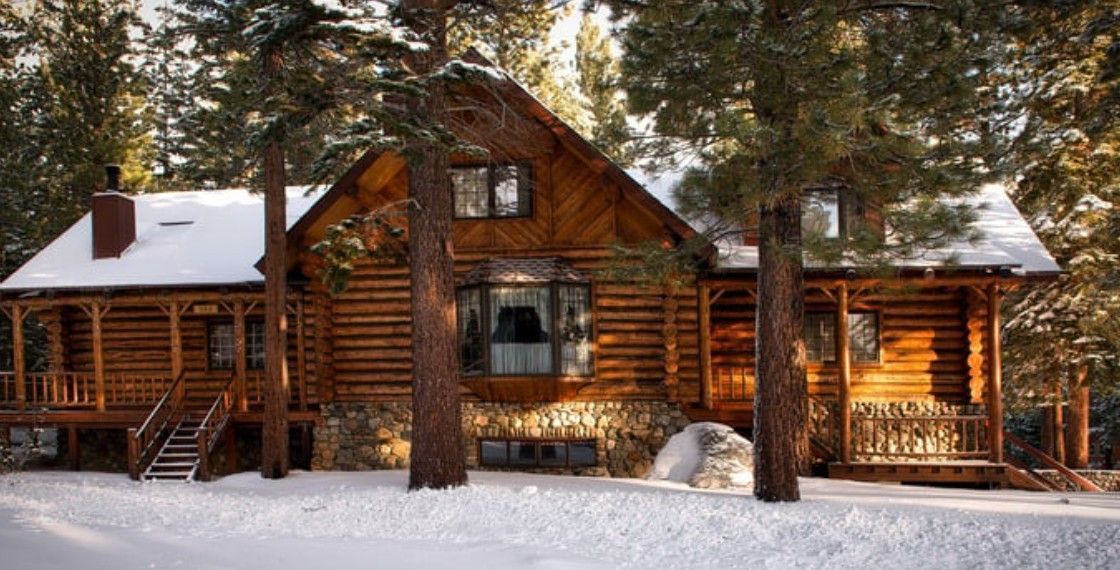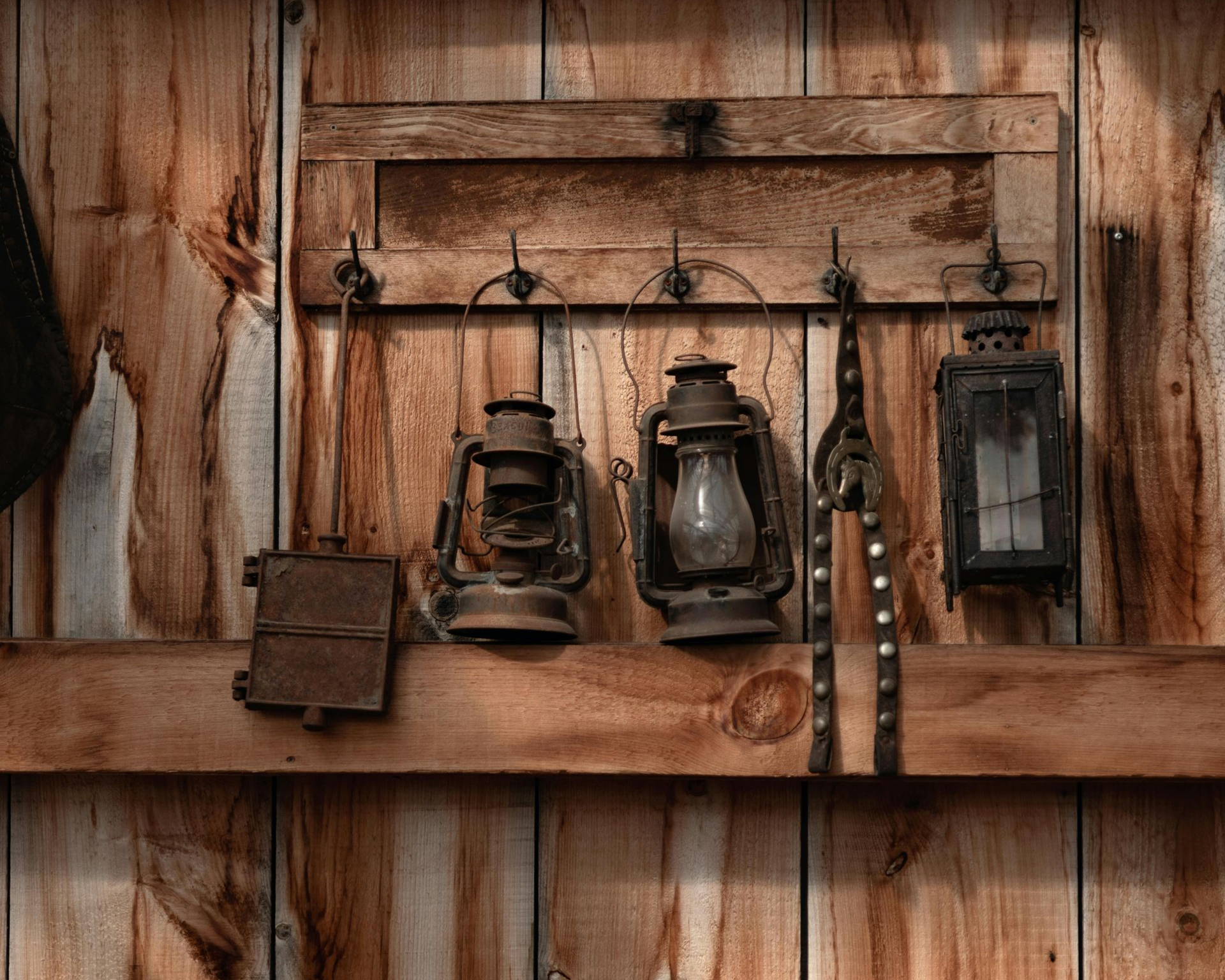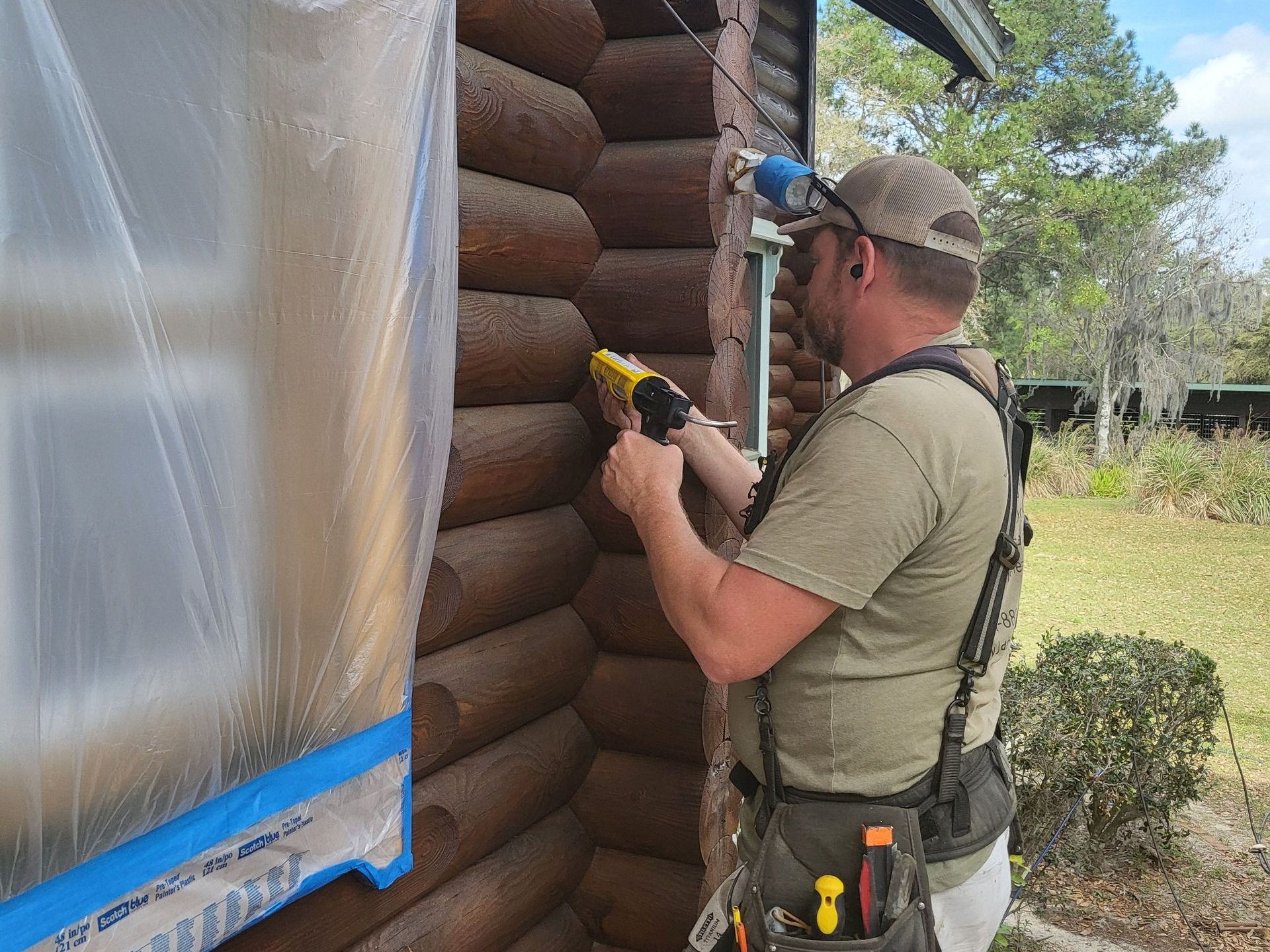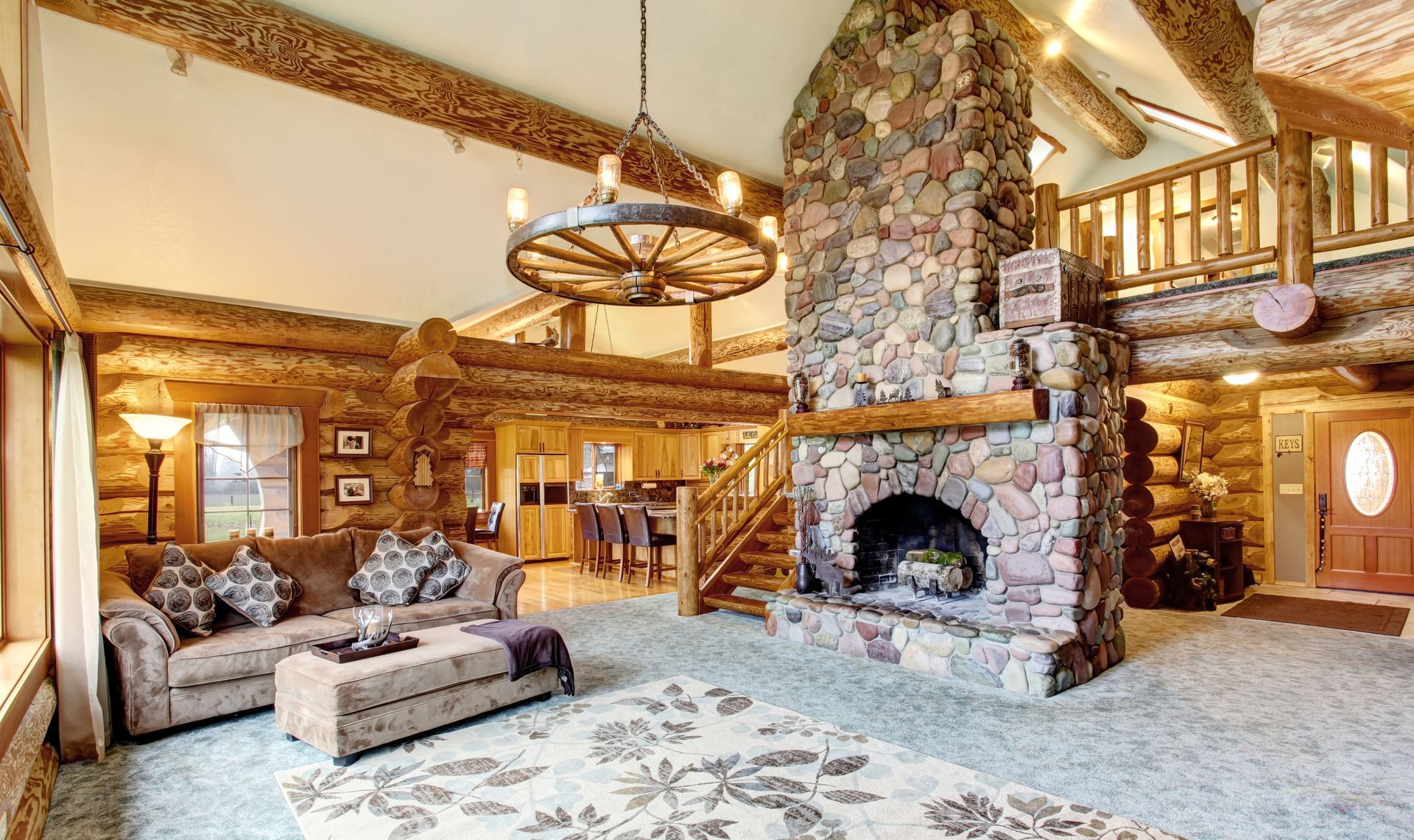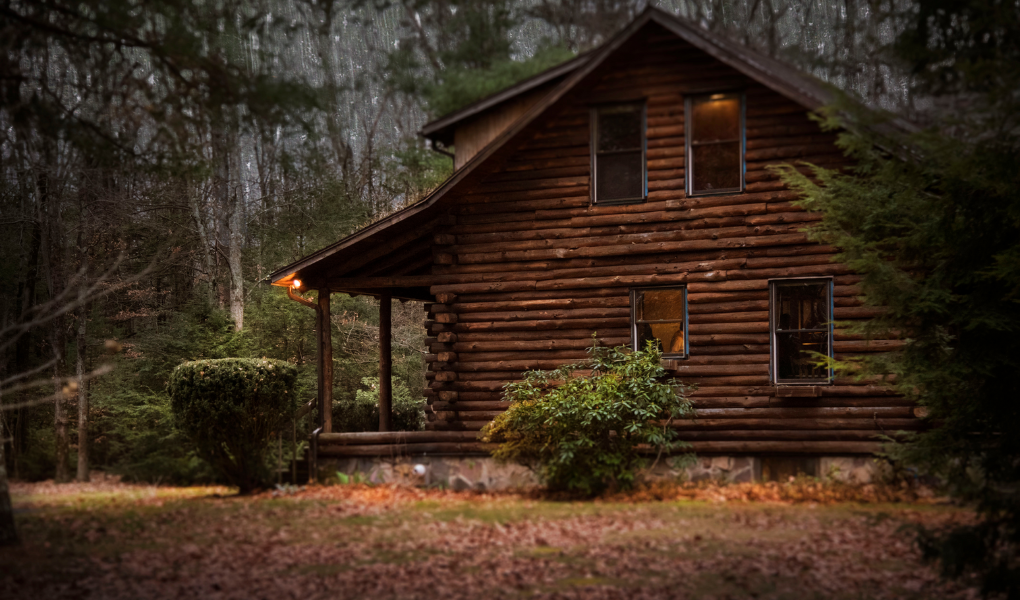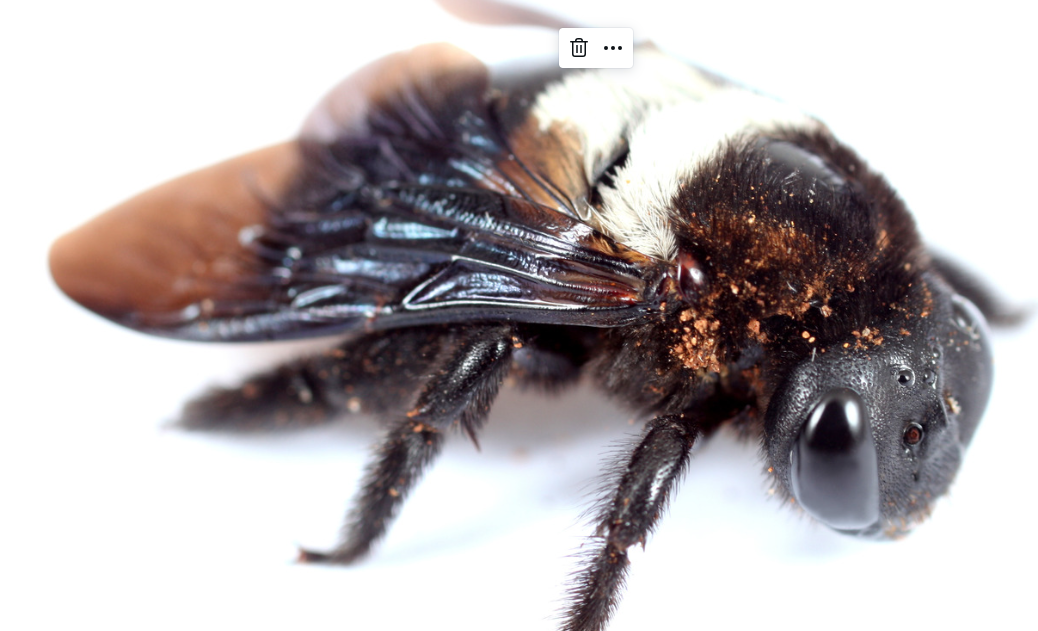Test Your Knowledge on Log Cabin Repairs and Maintenance

Think you're an expert on log cabin repairs and maintenance? Take this fun and educational quiz to test your knowledge. Whether you're a seasoned log cabin owner or thinking about buying a rustic retreat, this quiz will help you learn about the best practices for maintaining and repairing log homes. After each question, you'll find the answer along with a brief explanation. Let's get started!
What is one of the main reasons why annual log cabin maintenance is important?
A. To redecorate the interior
B. To avoid needing pest control
C. To prevent moisture damage and wood rot
D. To upgrade to modern construction materials
Answer (click here)
Answer: C. To prevent moisture damage and wood rot
Explanation: Logs naturally expand and contract with seasonal changes, creating cracks where moisture can seep in. Without proper maintenance, this can lead to wood rot and structural issues.
Which of the following protects log homes from UV damage and decay?
A. Chinking
B. Staining
C. Applying wallpaper
D. Media blasting
Answer (click here)
Answer: B. Staining
Explanation: Staining provides a protective layer that protects the wood and shields it from harmful UV rays, moisture, and insects while enhancing its rustic appearance.
What is the purpose of caulking and chinking between logs?
A. For aesthetic purposes only
B. To prevent drafts, moisture, and pests
C. To make the walls waterproof for swimming pools
D. To secure the logs in place
Answer (click here)
Answer: B. To prevent drafts, moisture, and pests
Explanation: Caulking and chinking fill gaps between logs, sealing the home against the elements and improving energy efficiency while keeping pests out.
What is the first step in preparing your log cabin for a fresh stain application?
A. Painting over the old stain
B. Media blasting or cleaning the surface
C. Applying the new stain immediately
D. Installing insulation
Answer (click here)
Answer: B. Media blasting or cleaning the surface
Explanation: Media blasting removes old stains, dirt, and buildup, ensuring the new stain adheres properly and achieves an even finish.
Why is pest control critical for log cabins?
A. Damage from Insects like powder post beetles can be hard to remediate
B. Pests can make it harder to decorate the cabin
C. To keep logs warm in winter
D. Pest control isn’t necessary in wooded areas
Answer (click here)
Answer: A. The wood can easily attract insects like carpenter bees
Explanation: Carpenter bees and other insects can bore holes into the logs, weakening them. Proactive pest control protects against infestations and structural damage.
What does log repair typically involve?
A. Adding new windows to your cabin
B. Refacing or Replacing damaged, rotted, or cracked logs
C. Painting logs to prevent damage
D. Cleaning the interior of the house
Answer (click here)
Answer: B. Replacing damaged, rotted, or cracked logs
Explanation: Log repair focuses on removing and replacing compromised sections of a log to maintain structural soundness and appearance.
How often should you inspect your log cabin for maintenance issues?
A. Every five years
B. At least once a year
C. Only after storms
D. Only when cracks appear
Answer (click here)
Answer: B. At least once a year
Explanation: Routine yearly inspections help catch small issues, like cracks or pest activity, before they become costly problems.
What natural element is log cabin maintenance designed to combat?
A. Earthquakes
B. Moisture and UV damage
C. Electromagnetic waves
D. Frost heaving
Answer (click here)
Answer: B. Moisture and UV damage
Explanation: Moisture causes wood rot, while UV exposure fades and degrades the wood over time. Maintenance protects your cabin against these elements.
Which of these is a benefit of applying chinking correctly?
A. Adds visual appeal to logs
B. Strengthens the cabin's structure
C. Provides insulation and prevents air leakage
D. Eliminates the need for staining
Answer (click here)
Answer: C. Provides insulation and prevents air leakage
Explanation: Properly applied chinking improves the energy efficiency of your cabin by sealing gaps and preventing drafts.
What’s the best way to remove old finishes from logs?
A. Sandpaper
B. Power washing
C. Media blasting
D. Steel wool
Answer (click here)
Answer: C. Media blasting
Explanation: Media blasting is fast and effective, removing old coatings and preparing the wooden surface for fresh applications without damaging the logs.
Why should log stain be UV-resistant?
A. To protect from pests
B. To prevent fading and wood damage
C. To assist in waterproofing the interior
D. To make the cabin glow at night
Answer (click here)
Answer: B. To prevent fading and wood damage
Explanation: UV-resistant stains protect the wood from sunlight, which can cause fading, cracking, and deterioration over time.
What is a common sign of carpenter bee damage in log cabins?
A. Round holes in the logs
B. Sticky wood surfaces
C. Red stains on the finish
D. Large piles of dust inside the cabin
Answer (click here)
Answer: A. Round holes in the logs
Explanation: Female carpenter bees create round holes to lay eggs, compromising the integrity of your logs if left untreated.
How can you prevent moss and algae growth on logs?
A. Regular cleaning and maintenance
B. Applying more chinking
C. Painting the logs white
D. Adding lights to the cabin exterior
Answer (click here)
Answer: A. Regular cleaning and maintenance
Explanation: Regular cleanings remove dirt and moisture, which can help prevent the growth of moss and algae on your cabin. A mildewcide can also be added to the stain to help.
What’s the purpose of sealing cracks in logs?
A. To improve curb appeal
B. To prevent moisture accumulating inside your logs
C. To create additional storage compartments
D. To make logs shiny
Answer (click here)
Answer: B. To prevent moisture accumulating inside your logs
Explanation: Cracks allow entry points for moisture and bugs. Sealing them protects both the structure and your investment.
Which of these is NOT recommended for log cabin care?
A. Regular staining and sealing
B. Skipping annual inspections
C. Addressing checks (cracks) immediately
D. Using pest control when needed
Answer (click here)
Answer: B. Skipping annual inspections
Explanation: Annual inspections are critical to identifying and addressing potential problems early, saving you money and maintaining your cabin’s longevity.
How Did You Score?
If you answered most of these questions correctly, congratulations! You’re well on your way to being a log cabin maintenance pro.
For further assistance or to handle any professional repairs or maintenance, call Log & Timber Solutions.. Whether it’s log staining, chinking, or pest control, their highly trained experts will help keep your log cabin beautiful and structurally sound for years to come. Don’t wait—contact them today!
FAQs
How often should I stain my log cabin to protect it from UV and moisture damage?
You should ideally reapply stain every 3 to 5 years, depending on your local climate and the type of stain used. Regular inspections can help you identify when your cabin might need a fresh coat.
What are the first signs of wood rot in a log cabin?
Look for soft, spongy wood, discoloration, or cracking along the logs. Addressing wood rot early by replacing the affected areas can prevent further structural damage.
Is it safe to use DIY methods for chinking and sealing cracks in logs?
While DIY repairs may work for minor issues, professional chinking ensures a durable, weatherproof seal. Improper application can lead to drafts, moisture intrusion, or pest infestations. For larger jobs, consulting experts like Log & Timber Solutions is your best bet.


